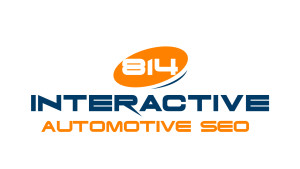Over the last couple of years, things have only become more and more difficult for the dealership that wants to start digital marketing.
The consumer has become more discerning, is less susceptible to marketing tactics, and is sometimes even openly antagonistic to marketing.
Automotive SEO has become one of the best ways to get your dealership in front of potential car buyers.
One of the biggest mistakes most dealerships make, however, is thinking that the automotive SEO strategy they implemented three years ago is still going to work this year.
Unfortunately, this is just not how SEO works.
Here are the nine strategies that might have worked in the past to get your dealership’s website ranked, but just won’t work anymore:
1. Building links for the sake of building links.
In previous updates to search engine algorithms, all you were required to do was to build as many links as possible.
The more links you had, the better your SEO worked, and the better your rank would be.
While building links is still an important part of automotive SEO, you cannot just build links without carefully considering the authority of the domain that hosts that link.
Rather than just building links everywhere that will let you place a link, you only want to be placing links on high value websites.
2. Make your content as keyword rich as possible.
While it’s true that you still want to use keywords in your content, Google no longer cares as much about exact match keywords.
It uses what is called a latent semantic indexing process, which helps to connect users with relevant content, even if it does not necessarily contain the exact keyword they were searching for.
It might, for example, give them an article about “sneakers,” even if they searched for “tennis shoes.”
3. Content and links are the most important.
In 2011, if you had good content, with good keywords, and a decent number of backlinks, you would probably have everything you need in order to get a great ranking on your website.
Today, these are still important factors, but they are not the only factors, nor are they really the most important.
Social signals, for example, are extremely important to getting ranked today—this wasn’t even on SEO’s radar five years ago.
4. A bigger website brings you more traffic.
This is something that you will still see blogs preaching to those who are new to automotive SEO.
And while it is true that a larger website is more likely to provide deeper and more informative content, bigger websites do not necessarily equal a better standing in google search results.
Your focus should always be on the quality of the content, not just on how much of it you have.
Google and its sister search engines are very good at sniffing out low-quality or stolen content, especially where it is used en masse.
5. A higher rank will always mean more traffic.
While it is true that you will want to rank has high as you possible can, having a high rank in a certain set of search results does not always mean that you are going to get the most traffic.
Users today can usually tell when they are being presented with a website that is not going to fit their needs.
If you have used the wrong keyword strategy and are showing up in search results where you do not belong, you are not going to see the traffic you want, even if you do have a great rank.
6. Guest blog to build your authority.
It is very important to build your authority, and guest blogging is a great way to get your voice heard, but in the past, people would churn out content for any blog that would let them, even if they were not in the same niche or even in the same industry.
All the website wanted was a backlink.
Today, Google only values backlinks that are on blogs that are relevant to your website or blog.
7. Your title tag should be stuffed with keywords.
This is another tactic that you are going to see all over the internet, even to this day.
Your title tag is not just another place to cram in as many keywords as possible.
It should be a legitimate title for your website.
If it happens to include a keyword, that’s great, but it should not just be a list of keywords.
8. Do not add images to your website.
We all know that images slow down the loading speed for your website. A slow website means a higher bounce rate, so you just shouldn’t include images, right?
The truth is that images are just as important, if not more important than written content.
Give those images the appropriate alt text and caption, and make sure you host the image properly so it does not slow down how quickly your page loads.
9. Make sure you are listed on every directory.
Especially for dealerships, it is still going to be important to be listed on your local directories.
This is where your buyers can leave you reviews and these websites have built-in authority and page ranking that can make you easier to find.
You should not, however, spam your directories with links to your website, nor should you create listings for your dealership on every single directory—especially not on those that have nothing to do with your industry (Urbanspoon, for example).




